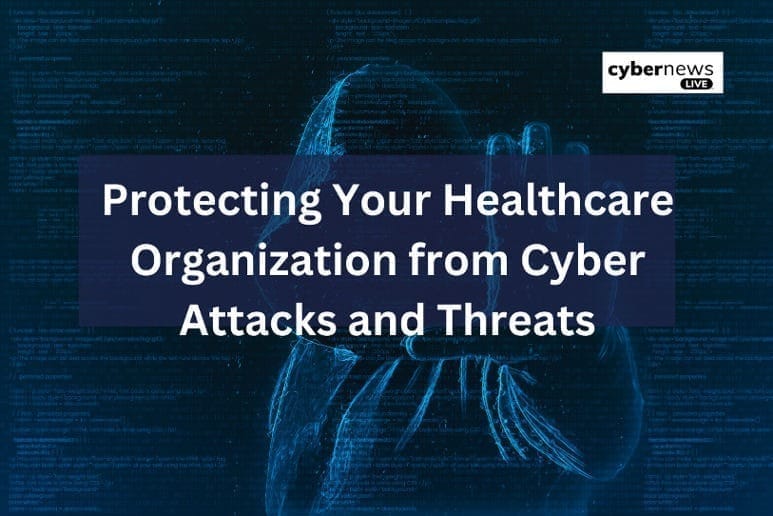
Protecting Your Healthcare Organisation from Cyber Attacks and Threats
Healthcare professionals in Australia face unique challenges in patient care while adhering to strict data regulations. At the same time, they are increasingly vulnerable to evolving cyber threats. The healthcare sector must secure medical devices, address human behaviour risks, and manage economic pressures, all while operating within limited budgets. Medical device security is particularly crucial, given the rapid integration of technology. Devices such as IoT systems, tablets, and smartphones require robust protection to ensure operational integrity. Meanwhile, human behaviour remains a weak link. The inherent trust within healthcare environments exposes staff to social engineering, making consistent security awareness training vital for countering phishing and ransomware threats.
CISOs and Security Leaders
To assist healthcare CISOs and leaders, a comprehensive guide outlines ten best practices for cyber security. These include fostering a strong security culture, monitoring employee activity, reinforcing password policies, conducting regular risk assessments, restricting network access, maintaining software security, implementing multi-factor authentication, planning for incident response, overseeing vendor relationships, and encrypting sensitive data. Building a resilient defence requires ongoing vigilance, continual training, and adaptability to emerging threats in an ever-evolving landscape.
Healthcare Organisations
Medical records in healthcare organisations typically contain sensitive details, including a patient’s full name, address, date of birth, phone number, email, Medicare or similar ID number, emergency contacts, health insurance details, and even financial information like credit card or bank account numbers. On the dark web, stolen healthcare records can fetch up to $1,000, far exceeding the $5 paid for stolen credit card numbers. This high black-market value has made the healthcare industry a prime target for cyber criminals. These attackers indiscriminately seek healthcare records, regardless of the organisation’s size, location, or type. Unfortunately, busy nurses, doctors, and other medical staff often miss signs of cyber attacks or malware infections while handling critical situations.
Impact on Healthcare
Cyber crime’s impact on healthcare is staggering. A 2019 Healthcare Business & Technology report revealed over 2,500 reported data breaches in healthcare between 2009 and 2018. Alarmingly, 62% of healthcare organisations experienced a breach within 12 months. The financial toll is equally severe, with the average data breach costing medical centres $3.62 million. Furthermore, the 2022 Gone Phishing Tournament found that 33.3% of healthcare employees willingly shared their login credentials after being lured by a fake gift card offer. These statistics underline the pressing need for healthcare providers to address cyber security challenges and safeguard sensitive patient data.
The Largest Cyber Security Challenges Facing Healthcare
The healthcare sector in Australia faces significant challenges in cyber security as organisations work to deliver advanced patient care, control costs, and comply with increasingly complex regulations on electronic records, IT security, and data protection. Balancing high-quality patient care with strict regulatory demands often strains resources, leaving healthcare organisations more vulnerable to cyber threats.
Cyber criminals take advantage of this vulnerability, knowing that healthcare professionals are now responsible for safeguarding data—tasks they may not be trained for and often lack the time to manage effectively. This creates significant risks for both patients and healthcare providers.
To combat these threats, healthcare organisations, security leaders, and CISOs must address three critical cyber security challenges. These challenges require a multi-faceted approach to ensure the protection of sensitive information while maintaining efficient and effective patient care.
Securing Medical Devices
With the rapid adoption of new technologies, including medical IoT, tablets, and smartphones, healthcare security leaders face significant challenges in ensuring the safety of medical devices. In this sector, maintaining the operational integrity of medical devices is vital for patient care and, in some cases, life-saving interventions.
Enhancing Medical Device Security
To strengthen the security of medical devices, it is essential to:
- Keep all devices, networks, operating systems, tablets, and smartphones updated with the latest software and patches.
- Regularly assess devices for vulnerabilities and implement robust controls to safeguard them against emerging cyber threats.
- Train staff on recognising and addressing potential risks linked to medical devices.
The Impact of Human Behaviour
Human behaviour plays a significant role in cyber security risks. A natural inclination towards trust and helping others makes individuals more vulnerable to social engineering, phishing, ransomware, and other cyber threats. Consistent and engaging security awareness training is essential. To reduce human-related risks:
- Deliver training that uses real-world scenarios to demonstrate risks associated with emails, text messages, and phone calls.
- Implement comprehensive awareness programs that clarify individual responsibilities in handling sensitive information and technology.
- Foster a culture of accountability and shared understanding of each employee’s role in protecting organisational security.
Economic Pressures on Healthcare
Healthcare institutions, including hospitals, research centres, and clinics, often face tight budget constraints. These pressures can make it difficult to allocate adequate resources to IT security and awareness training. Additionally, the financial impact of system downtime—such as productivity losses and delays in critical equipment like MRI machines—compounds the challenge.
To address these economic pressures:
- Ensure that management and decision-makers fully understand the economic risks of cyber attacks and data breaches.
- Highlight the cost-effectiveness of proactive measures, such as maintaining updated software and running innovative security awareness training campaigns.
- Emphasise the long-term savings achieved by avoiding costly breaches, downtime, and reputational damage.
By addressing these challenges with practical and proactive solutions, healthcare organisations can build more resilient defences, ensuring both operational continuity and patient trust.
10 Best Practices for CISOs and Security Leaders
Securing healthcare data is crucial, and these ten cyber security best practices provide a strong foundation for improving your organisation’s data protection measures:
- Foster a Cyber Secure Culture: Conduct regular, engaging security awareness training for all staff. Use real-world scenarios and interactive sessions to promote behaviour changes and strengthen cyber security awareness.
- Monitor Employee Awareness: Periodically test employees’ knowledge of phishing and ransomware. Use phishing simulations to identify gaps in understanding and provide targeted training to address weaknesses.
- Reinforce Strong Password Practices: Encourage staff to create strong, unique passwords, particularly on mobile devices. For organisations with bring-your-own-device (BYOD) policies, offer training on mobile device security and the importance of password hygiene.
- Conduct Regular Risk Assessments: Perform thorough assessments of networks, technologies, software, and employee practices. Identify vulnerabilities and promptly address them with updates, patches, and additional security training.
- Limit Network Access: Restrict access to sensitive data to only those who need it. Ensure authorised personnel have advanced security knowledge and provide ongoing training to keep them informed about emerging cyber threats.
- Maintain Software and System Security: Keep all software, operating systems, and applications updated and secure. Use firewalls, malware protection, and anti-spam tools, and tightly control physical and virtual access to systems.
- Implement Multi-Factor Authentication: Add an extra layer of protection with multi-factor authentication for accessing critical systems and sensitive data. This reduces the risk of unauthorised access even if a password is compromised.
- Develop an Incident Response Plan: Create a detailed response plan to handle breaches, cyber attacks, and other security incidents. A well-prepared plan ensures swift action, minimising damage and downtime.
- Monitor Third-Party Vendors: Closely manage vendors with access to your systems. Define clear rules for their access and actively monitor their activities to identify and mitigate potential risks.
- Encrypt Sensitive Data: Use encryption to protect data both in transit and at rest. Patient records, financial information, and other confidential data should remain unreadable if accessed without authorisation, adding a critical layer of security.
By adopting these practices, healthcare organisations can better protect their data, build resilience against threats, and maintain trust with patients and stakeholders.
Conclusion
In the constantly evolving landscape of cyber security, protecting healthcare organisations from cyber threats is a vital responsibility. The healthcare sector’s vast stores of sensitive data make it an attractive target for malicious actors seeking unauthorised access. To counter these risks, healthcare organisations must take proactive measures, enforce robust security protocols, and build a culture of cyber security awareness.
Ongoing vigilance, regular staff training, and staying informed about emerging threats are essential in this ongoing battle. Ultimately, safeguarding healthcare information is more than a technological requirement; it is a commitment to protecting patient data, preserving trust, and ensuring the delivery of quality healthcare services in an increasingly interconnected world.
Call to Action: Join Cyber News Live for the latest insights on Protecting Your Healthcare Organisation from Cyber Attacks and Threats. Arm yourself with knowledge and proactive strategies to safeguard sensitive data.




